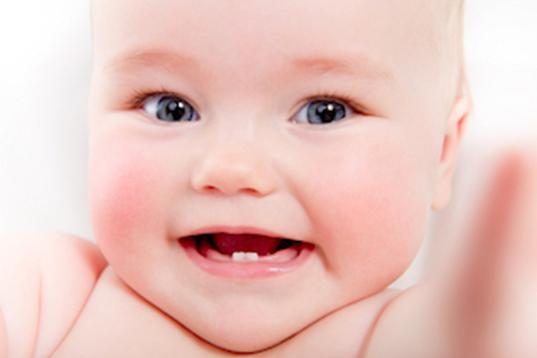
All you need to know about teething
Teething of primary teeth is in some cases quite easy, however, for some babies it may be very annoying. How to recognize the process of teething? And how not to confuse this situation with other problems?
When is the appropriate time for teething?
Every baby is different, that is why the start and a succession of growing teeth could be different. First primary tooth appears within 4thto 12thmonth of age. The most often it is between 6thand 9thmonth. The middle lower incisor is usually the first. Teeth can grow separately but often more than one tooth appears in the same time.
Your baby should have complete primary teeth consisting of 20 teeth in the age of three.
Sometimes the first tooth could appear right after the birth (natal tooth) or in one month after the birth (neonatal tooth). In this case you have to visit your doctor. The doctor decides about next steps. This tooth could be a part of primary teeth or a supernumerary tooth. The supernumerary tooth is usually recommended to be removed. If it is a part of primary teeth, everything is all right. The dentist regularly watches it. If the tooth is moving, there is a risk of swallow, inhalation, irritation of the tongue or it may cause obstacles during breastfeeding and therefore is necessary to be removed.
What can be noticed in the mouth?
The teething is a physiological process, in which the crown of a primary tooth is pushing through the gum. Before the teething itself, the gum gets whiter and the small bump appears. The redness or swelling in some cases can also be noticed. The tooth is a small white piece and it is growing by the time.
If you notice a blueish blister on the gum above the tooth, do not panic. It is probably eruptive cyst and it disappears after showing the tooth. In case this cyst does not disappear, the pain comes, or you have some doubts, you should visit your dentist.
Common symptoms
The symptoms usually come a few days before the tooth appears in the mouth and go away after the tooth is teethed.
- Your baby is restless, upset, anxious and crying
- Overproducing saliva – can cause rushes at the cheeks, chin or chest
- Often sucking and biting of hands and toys
- Sensitivity, redness and swelling of the gums
- Gentle bleeding of gums
- Problems with sleep
- Refusing food and drinks
- Slightly higher body temperature (up to 38 oC)
- Limpid snots
The tooth sometimes just appears in the mouth, without any previous signs.
WARNING! If your baby has a body temperature higher than 38 oC, diarrhea, mucous snots, cough or vomit, you should contact your doctor. It can be a start of illness. These symptoms are usually connected with teething but could delay a diagnostics and healing of an illness.
How to help your baby overcome this time and what to not to harm him, you can read in our next blog.